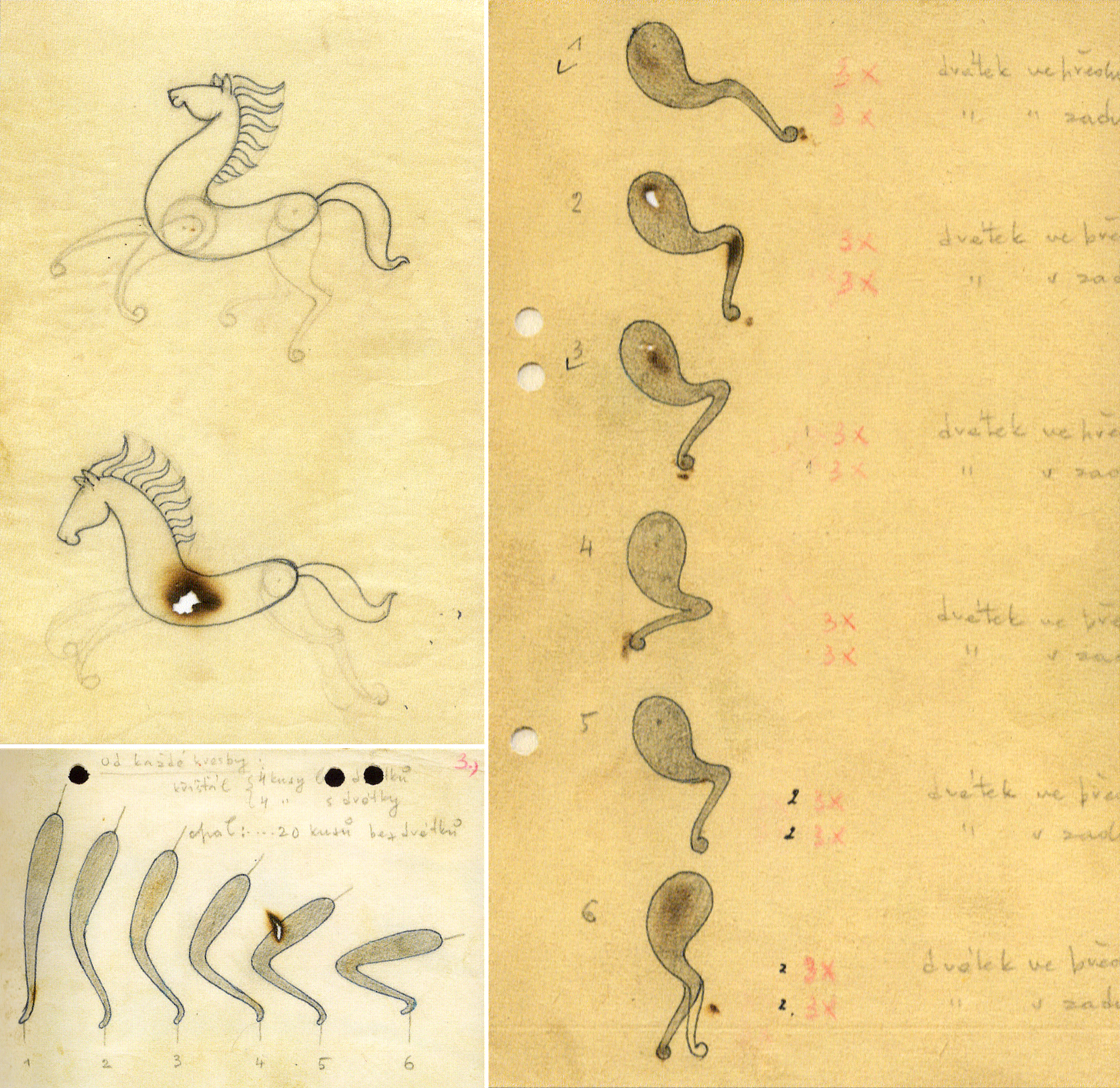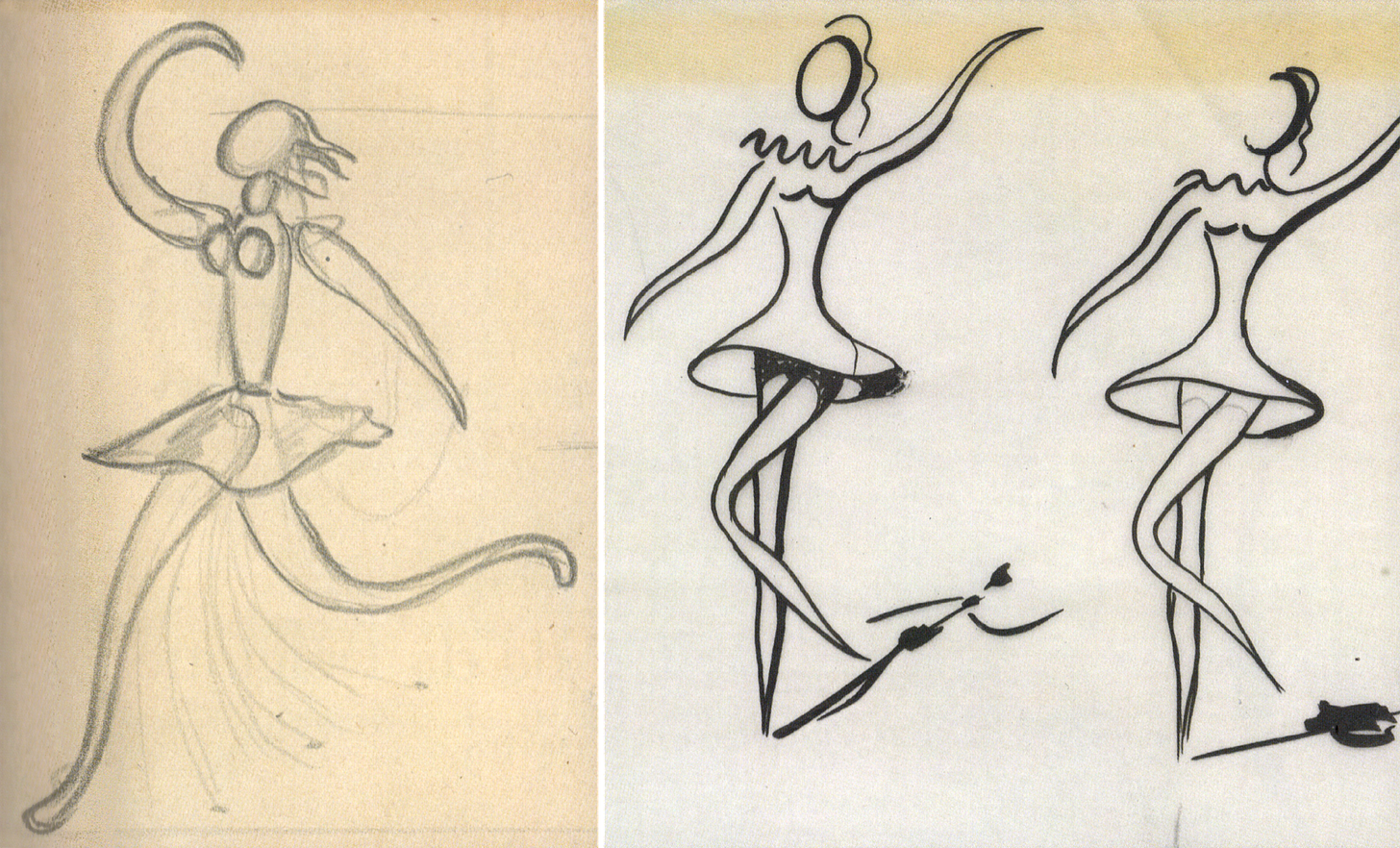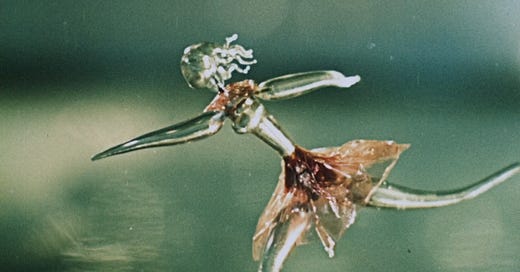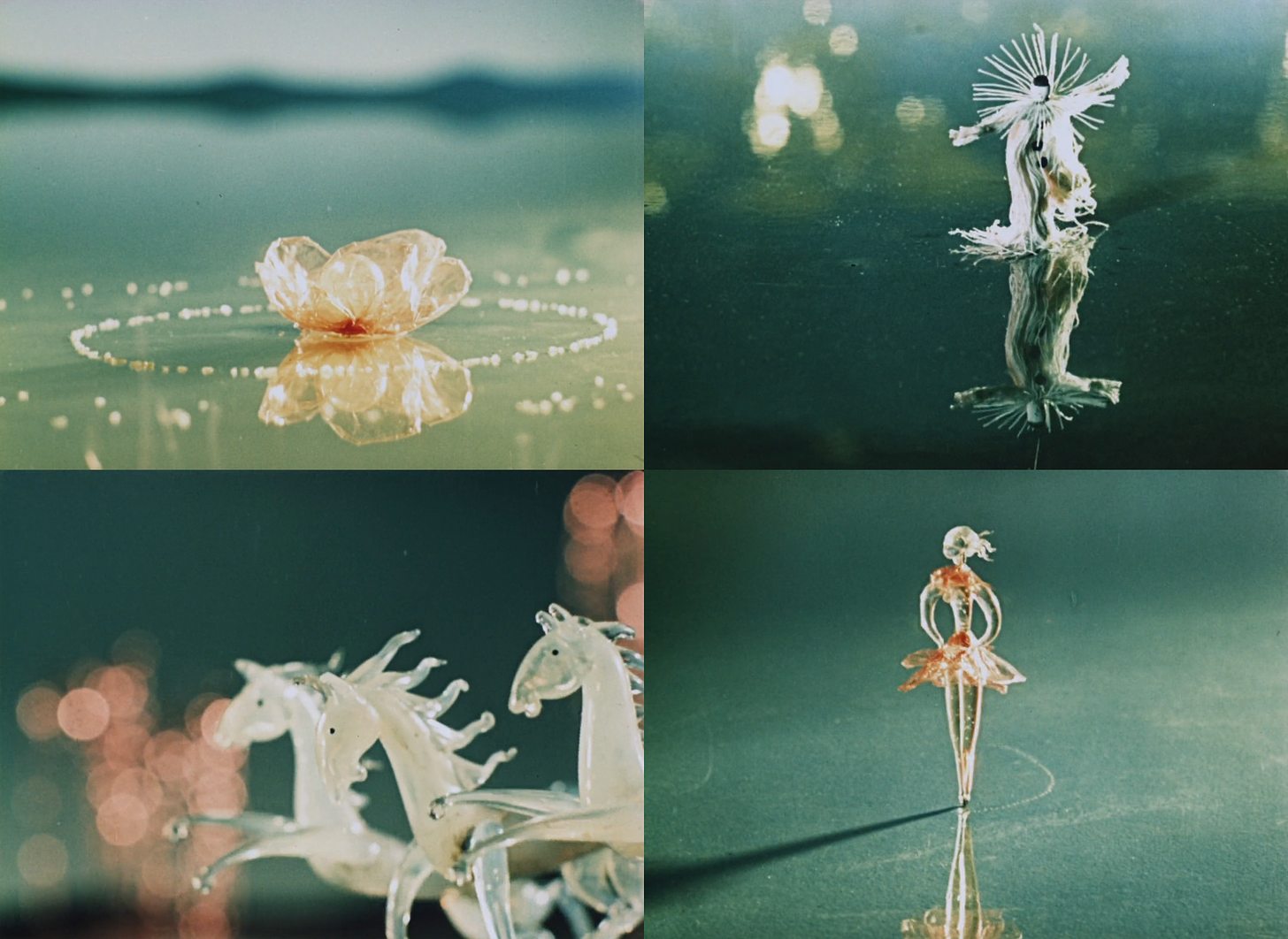Welcome back! We’re here with another Sunday edition of the Animation Obsessive newsletter. We hope you’ll enjoy.
Before we get into it, a word about The Unofficial Art of Coraline, the free PDF we released last Sunday. The response to it was amazingly positive — we were overwhelmed. That said, the uploads were met with takedowns earlier this week. According to Laika’s management, this was a mix-up. They thanked us for creating the PDF and told us that the files will be restored. So, we’ll update you about that when we can.
Now, this is the plan for today:
1️⃣ On Inspiration (1949), stop-motion animation with glass.
2️⃣ The world’s animation news.
Just joining us? It’s free to sign up for our Sunday issues — you’ll get them right in your inbox:
With that, here we go!
1: A delicate fantasy
Something about it stops people in their tracks. They’re riveted — they have to look. That’s the reaction on social media today, and it was the reaction in theaters more than 70 years ago, when Inspiration (1949) debuted.
“This film is dedicated to Czech glassmakers,” reads the title card, “who transform the hard stuff of glass into magical visions inspired by their own poetic imaginations.”
Inspiration is a piece of animation made primarily in glass. A team of artists put it together in Czechoslovakia, not long after the war. It’s a fanciful, lyrical film whose beauty doesn’t age. Even now, it’s not fully clear how it was done, or why it works so much better than it should.
It’s a story set inside a single drop of rain — a complete world in itself. A drama plays out between the glass ice-skater Columbina and the lovelorn Pierrot, who’s made from wood, wire and string. It’s all in the imagination of a glassmaker, stuck in his work and waiting for an idea. As he stares at the rain outside, this story is born.
Inspiration is an early work by Karel Zeman (1910–1989). He’s a filmmaking icon — one of the three directors who “stood by [the] cradle” of Czech animation in the mid-1940s, when it first came into its own. According to one historian, Inspiration was “the film that once and for all brought him to the international limelight … for most people it was a stylistic shock.”1
Zeman explained the project like so:
... I was at the start of my filmmaking. I was convinced that in front of the puppet film lay unlimited possibilities in the exercise of imagination and the discovery of new magical realms. I attempted this in the film Inspiration.2
You can find it embedded below:
As a director, Karel Zeman was obsessed with the technical side of film. Each of his projects was a new set of tricks to invent and problems to solve. He admitted that he was “very much bound to the possibilities of technology.” An interview with him about his career might result in pages of talk about recent developments in aspect ratio.3
Zeman chased the new — and the impossible. The camera operator on Inspiration characterized him as a control freak.4 In later films, like Invention for Destruction (1958) and Baron Munchausen (1962), Zeman created a style that can’t be classified as live action, stop motion, puppetry or cel animation. It combines them all, and it paved the way for filmmakers like Terry Gilliam.
Inspiration is mainly an animated film, but it grew out of this same fixation on technical details. The story goes that it started as a bet: could Zeman animate with glass? Myth or not, he was looking to do something unprecedented. In the words of his daughter, Ludmila Zemanová:
The film Inspiration was one of the signposts on my father’s path of exploration. One of his principles was that it wasn’t good to repeat himself.5
Zeman made Inspiration at a small animation studio in Zlín. He’d started there in the mid-1940s amid the Nazi occupation, working on a piece called A Christmas Dream with the great Hermína Týrlová.6 When the Nazis were driven out, the Czech animators spread their wings. Zeman’s promising early results led to bolder, more fully realized experiments.
Inspiration was maybe his boldest of the ‘40s, and his most strenuous technical challenge by that point. For decades, people have guessed at how, exactly, it was done. Glass is one of the world’s least-animatable materials. It took a series of magic tricks to make it dance.
The first was that Columbina, the glass skater, was moved via stop-motion replacement animation. Zeman first drew her movements on paper, frame by frame. Then he handed them off to the glassmaker Jaroslav Brychta and his students in Železný Brod, who sculpted them — each piece of glass a frame of animation. Replace one with another between photographs, and you have motion.


That was just one trick. Another: Columbina’s arms, legs and head could all be replaced independently. Thin wires ran through her torso, fitting inside the separate pieces of glass and holding them in place.
And another: the glass horses’ legs, attached to the sides of their bodies, could be adjusted and replaced as well. It took tweezers to do, and (like every bit of animation in this film) it was careful, stressful work.
And still another: Columbina is visibly suspended by wires when she leaps, but, according to Soviet author Sergei Asenin, she was more often soldered to the glass sheet beneath her. Shifting this glass rather than the character allowed for complex movements.7
Basically, as usual for a Zeman film, a variety of stuff is happening on screen. In fact, glass animation by itself didn’t create the look of Inspiration. It’s trickery all the way down: bringing the puppets closer to the camera than normal and filming a little out of focus; shining lights through transparent colored objects just out of view to change the color of the set. Zeman didn’t simply make glass move and call it a day.
Which is why Pierrot isn’t glass at all. For Zeman, Columbina and Pierrot represented different ideas — so, they were made with different materials. Columbina is “cold, unapproachable and proud,” while Pierrot has a “quivering, passionate nature.” One became glass; the other was built out of a bundle of strings, always in motion.


This is just what we’ve seen documented about the process. There was definitely more — with Zeman, there always was. And much of it is probably lost. As a Czech outlet boasted about the production in 1948:
This is a groundbreaking achievement never realized anywhere until now. It brings with it a number of unexpected hurdles, especially on the technical side of the process, during which it is necessary to invent new working methods.8
That said, knowing how Inspiration was done doesn’t change that much about the viewing experience. The film hides its seams because finding them isn’t the point. You’re supposed to lose yourself in the imagery and feeling, and you do. Whether you have a rough idea of the process or none whatsoever, Inspiration is still mesmerizing. It’s still magical.
When Inspiration first toured the world, reaching places like Canada and India and Uruguay and the United States, people were stunned. There were awards at the time — and it had a way of lodging itself in people’s memories. It impacted animators who lived very far from Czechoslovakia.
“For Japanese animated film director Tadanari Okamoto, Inspiration was one of the films he loved watching most,” said animator Koji Yamamura (A Country Doctor). “He was among the Japanese filmmakers greatly influenced by Zeman’s work.”9
Karel Zeman’s later projects, his feature films like Baron Munchausen, came to define his legacy. In that sense, Inspiration was a stepping stone — the trick photography, the mixed media. Taken on its own, though, it’s clearly a major work. Like a Czech critic observed in the late ‘80s, “If he had made nothing else but the animated Inspiration ... he would have gone down in world film history.”
2: Newsbits
The Brazilian feature film Perlimps is streaming via The Animation Showcase, available for free to people in the industry. It’s the latest from Alê Abreu, known for his Oscar nominee Boy and the World.
In England, researcher Daniel Aguirre Hansell has unearthed a real rarity: a jazz single by Richard Williams (The Thief and the Cobbler) from the early ‘60s, when his popular Dick Williams Band was active. Hear it online for the first time.
In America, Across the Spider-Verse editor Michael Andrews did a great video interview with The Editing Podcast. For anyone interested in a hardcore behind-the-scenes look at the film: don’t miss this one.
The latest series by the Japanese studio Dwarf, Pokémon Concierge, has Tadahiro Uesugi in its credits as the concept artist and character designer.
American Substack writer Eliza Brooke has a long feature on Patrick McHale of Over the Garden Wall fame. In it, McHale reveals a lot about himself and his career.
In India, Vaibhav Studios (Lamput) has completed its first feature film, Return of the Jungle — after many, many years of work. It’s set to premiere in a few days at the International Film Festival of India.
Also in India: Studio Eeksaurus has created a short, fun piece of claymation as a promo for itself. We like a lot of Eeksaurus’s work, and this is no exception.
The Chinese feature Deep Sea, a wild visual trip and a strong performer at the domestic box office, has been licensed for a North American release.
News from the Netherlands: Blender 4.0 is out, and Blender Conference 2023 (held a few weeks ago) had a presentation on Grease Pencil in Spider-Verse and one by teen Spider-Verse animator Preston Mutanga.
Hayao Miyazaki’s The Boy and the Heron has earned nearly $5.7 million in Taiwan and $14.2 million in South Korea. In France, it’s reportedly set to pass the number of theatergoers reached by Spirited Away.
In Spain, animator Raúl García talked about his time at Disney during the Disney Renaissance, and about how that era came to an end.
Mavka has become Ukraine’s highest-grossing domestic film since the fall of the USSR. When foreign films are included, it’s third behind Spider-Man: No Way Home and Avatar 2. It’s set to hit Netflix next month.
In Mexico, El Taller del Chucho (Pinocchio) has an open call for its course on stop-motion production, from start to finish. The submission deadline is December 10.
Lastly, we looked at a group of standout festival films that have come online for free.
See you again soon!
The comment about standing beside Czech animation’s “cradle” was made by Jan Poš in Krátký Film: The Art of Czechoslovak Animation (1991). The one about the international limelight is Giannalberto Bendazzi in Animation: A World History (Volume 2).
From The Magic World of Karel Zeman (2015), a book we relied on quite a bit for today’s issue.
Zeman’s line about technology is quoted in Marie Benešová’s 1980 article Zápas o tvar. And that interview isn’t hypothetical: it’s more or less what happened in the 1956 article Rozhovor s Karlem Zemanem. Both are collected in the book Animation and Time (Animace a doba).
That’s Antonín Horák, in a 2003 interview conducted shortly before his death. Horák had scores to settle — he suggested that he’d taught Zeman and Hermína Týrlová almost everything they knew — but it’s a valuable document when taken with a grain of salt.
From the documentary Film Adventurer Karel Zeman (2015), another source we used a few times.
There’s a convoluted story behind A Christmas Dream. It was originally Týrlová’s film — she and Zeman oversaw the puppet scenes, while Bořivoj Zeman (no relation) directed the live-action scenes. After a 1944 studio fire destroyed the negative, Karel Zeman got the job of directing the remake we know today, since Týrlová was tired of the project. She moved on to Revolt of the Toys (1946). This is all explained in Marie Benešová’s book Hermína Týrlová.
Asenin made this claim about soldering in The Fantastic Film-World of Karel Zeman (1979), the earliest full book we’ve found about Zeman’s work. We used it a few times today — the quotes about cold unapproachability and quivering are his, paraphrasing Zeman.
From a 1948 report quoted in this thesis, which contains a good section on Inspiration. Notably, a separate 1948 report gave the film’s original working title as The Ice Queen.
Yamamura revealed this in Film Adventurer Karel Zeman. Okamoto was one of the essential Japanese stop-motion directors — and an influence on Yamamura, who knew him while he was still active.





Such an wonderful movie
Have you done any posts on Oskar Fischinger? I tried searching to see your take on it, but couldn't find it.